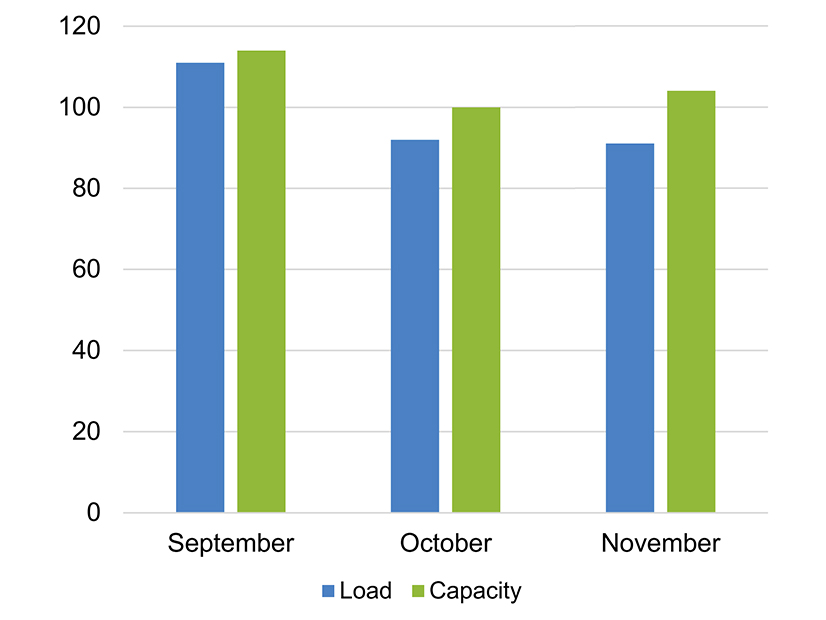As it navigates a tough summer, MISO is more optimistic about successfully managing operations this fall.
The grid operator on Thursday released a fall resource adequacy outlook, where it said it shouldn’t encounter trouble if demand and generation outages remain at normal levels throughout autumn.
Using a probable peak load forecast, MISO expects to have 114 GW of firm resources on hand to cover a projected 111-GW peak in September; 100 GW available to manage a 92-GW peak in October; and 104 GW by the time November’s expected peak demand of 91 GW rolls around.
Still, September’s skimpy surplus means the RTO is not ruling out the possibility of emergency actions. The National Oceanic and Atmospheric Administration has said almost the entire MISO footprint should see a warmer-than-normal fall.
The grid operator said a high-outage scenario in September could possibly completely exhaust the 10.3 GW cushion of emergency operating reserves and load reduction. MISO said a higher-than-expected load of 117.5 GW could outstrip its fleet if only 104.3-GW of firm resources are available.
The RTO also said it might declare an emergency to dip into load-modifying resources in a worst-case scenario in October, when high outage rates could make only 95.3 GW of non-emergency resources available and demand surges to 97.5 GW.
MISO typically experiences 34.5 GW worth of generation outages in the fall, with about 11 GW of that forced. The RTO’s all-time fall peak load of 115 GW occurred in September 2017.
Summer Woes Still Top of Mind
Most of the MISO community’s attention remains on the summer heat and how much worse it could be this time next year.
During a Market Subcommittee meeting Thursday, Independent Market Monitor David Patton said there may be cause for “heightened concern” next summer. He said he anticipates about 1.4 GW of generation heading into retirement between now and next year.
Patton continues to insist MISO isn’t communicating all risk in its pre-season summer assessments, failing to account for generation derates during heat waves.
“As temperatures get hotter and hotter, the generating capacity of our thermal generation tends to go down,” he said.
Stakeholders asked how MISO can avoid ERCOT’s fate of never-ending warnings of summertime energy conservation. (See ERCOT Dances with Danger Again.)
“You don’t want to be ERCOT,” Patton said before adding, “Not to put too fine a point on it, but I’ve been telling MISO for ten years now that you’re going to have a resource adequacy problem.”
Patton said MISO needs a sloped demand curve in its capacity auction to produce “reasonable” and not “close to zero” prices, allowing some resource owners to make enough money to stave off retirement.
“We haven’t done it, and we’ve needed it. And now I think we’ll do it,” he said of the demand curve changes. “It’s not rocket science.”




